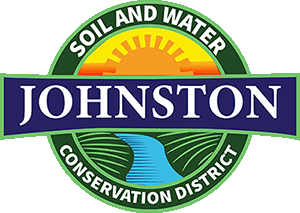
Soil and Water Conservation
Johnston County, North Carolina

Johnston County, North Carolina
Soil Conservation is a combination of practices used to protect the soil from degradation. First and foremost, soil conservation involves treating the soil as a living ecosystem. This means returning organic matter to the soil on a continual basis.
Soil conservation can be compared to preventive maintenance on a car. Changing the oil and filter, and checking the hoses and spark plugs regularly will prevent major repairs or engine failure later. Similarly, practicing conservation now will preserve the quality of the soil for continued use.
Soil conservation is a "combination" of practices used to protect the soil from degradation. First and foremost, soil conservation involves treating the soil as a living ecosystem, and recognizing that all the organisms that make the soil their home, play important roles in producing a fertile healthy environment. They are responsible for breaking down organic matter, releasing nutrients, and opening up spaces for the circulation of air and water.
Because most organisms in the soil depend on dead plant and animal matter for their food and energy, soil conservation requires that organic matter be returned to the soil on a continual basis. Organic matter is what provides good soil structure and water holding capacity, promotes water infiltration, and protects the soil from erosion and compaction.
In addition to preserving soil life and organic matter, the other principles of soil conservation are to:
Soil conservation is an active ongoing process throughout which the practitioner must maintain his/her commitment. The first step is to obtain a good basic knowledge of the land resource. This means knowing where the soil is most permeable and susceptible to groundwater contamination from excess pesticides; or where the land is most susceptible to water erosion because of a combination of slope and soil texture. Without this understanding, it is impossible to plan an appropriate conservation strategy.
The next steps are identifying or predicting problem areas, choosing and implementing soil conservation techniques, and maintaining control structures. The final step is to continually monitor the effectiveness of the plan and make changes if and when necessary.
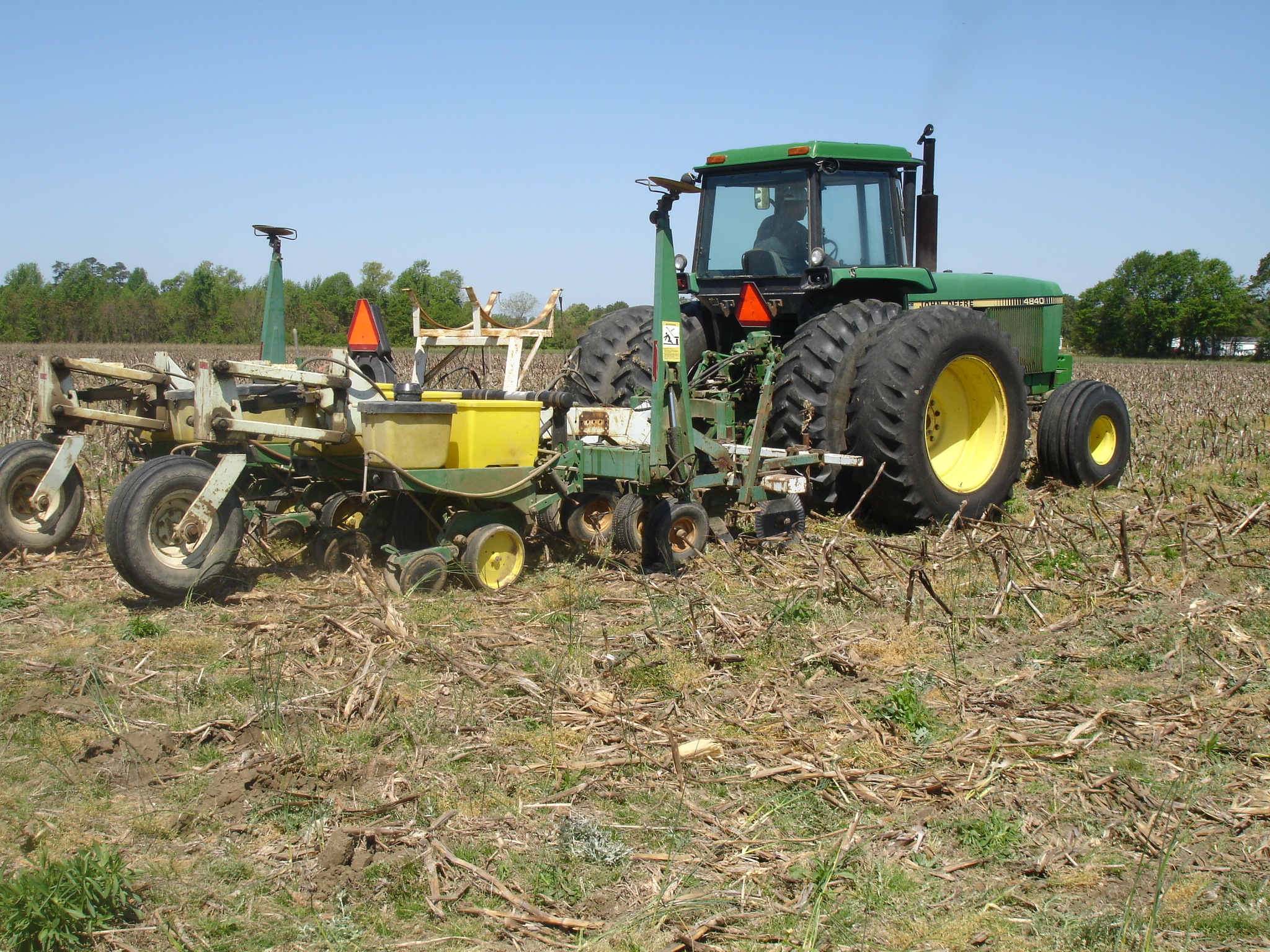
Conservation tillage consists of a variety of practices used in agriculture to reduce wind and water erosion. The main principles are:
a) to keep bare soil protected at all times of the year either with living vegetation, or with residue from the previous crop; and
b) to minimize the number of times the field is tilled.
Bare soil is highly susceptible to erosion. Excess tillage destroys soil structure and organic matter.
In conservation tillage, at least 20 to 30 percent of the soil surface is covered in the previous year's crop residue after planting. The residue reduces wind velocity at the soil surface and breaks the impact of raindrops. Root systems hold the soil in place. If practiced across a slope, rows of stubble act as small dams to slow water as it runs down hill.
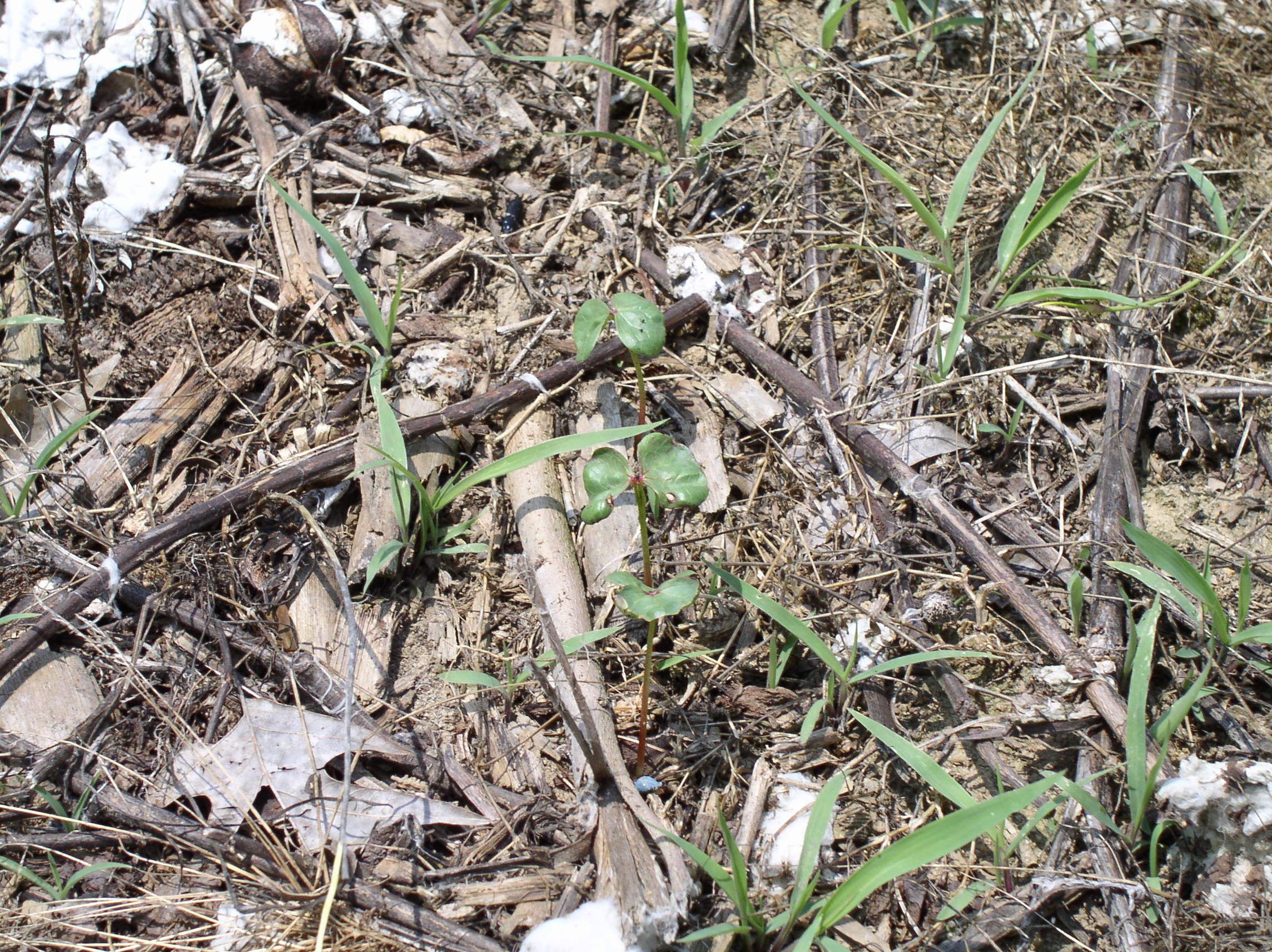
No-till farming involves planting seeds into the residue of the previous crop, with no tillage between harvest. No till leaves 60 to 70 percent of a field covered with crop residue.
Another aspect of conservation tillage is the choice of machinery used. The traditional moldboard plow tends to overturn and throw the soil leaving it bare and exposed to erosion. Chisel plows however, leave 30 to 50 percent of the soil surface covered with residue.
Timing is also important. For most soil types, it is better to till a field in the spring after the major erosive force of spring melt has passed. (Clay soils however, respond best to fall tillage). Soil should not be tilled and traveled on when it is wet. This practice is the leading cause of soil compaction.
Aside from erosion control, the other advantages of conservation tillage are increased water infiltration, a greater addition of organic matter to the soil, and savings of fuel and time for the farmer. Conservation tillage also enhances wildlife habitat for soil organisms, birds and small animals like field mice and snakes.
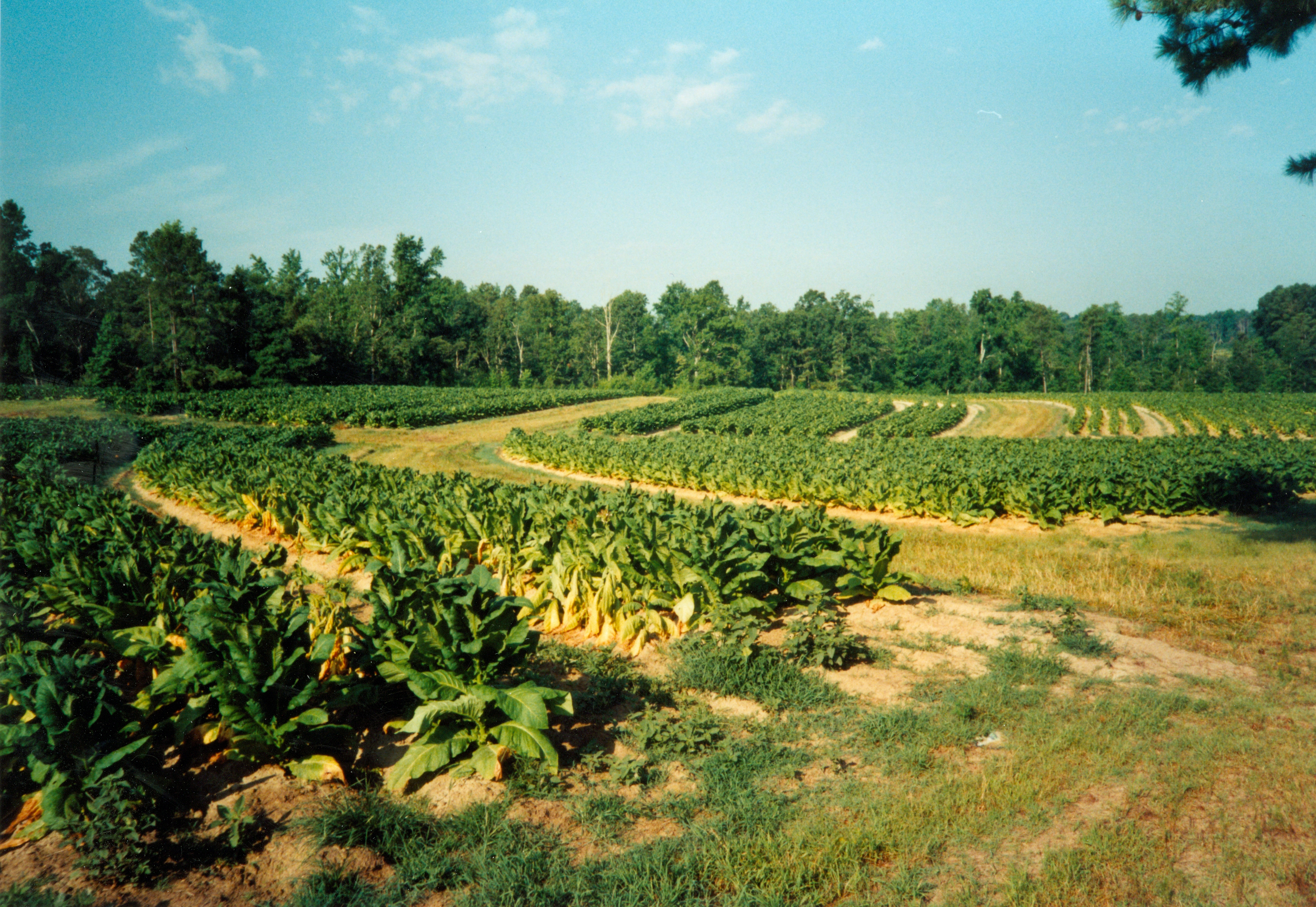
Contour farming involves tilling and planting along the contour, rather than up and down the slope. The furrows and rows of plants act as dams which slow down the flow of water moving down the slope. Unless some type of contour farming is used, particularly on long slopes, serious field erosion can result.
Contour farming also uses less fuel and power for tractors.
Strip cropping involves alternating strips of small grain (e.g. rye) or forage crops (e.g. clover) with row crops like corn. It is used to control erosion by reducing the velocity of wind and water. The forage and cereal grain rows tend to trap sediment that may otherwise end up in watercourses.
Strip cropping is most effective in controlling erosion on a slope when it is placed along the contour of the land. To control wind erosion, it works best if the strips are placed at right angles to the direction of the prevailing winds.
Another benefit of strip cropping is the organic matter added from the forage or cereal crop rows.
A windbreak or shelterbelt is a vegetation barrier designed to reduce or eliminate the velocity of the wind and hence reduce wind erosion. (Windbreaks are also used for snow control and to provide shelter for buildings and livestock).
A distinction can be made between windbreaks and shelter belts. Windbreaks consist of one to five rows of trees or shrubs; shelter belts are six or more rows wide.
Windbreaks are generally planted on the west, southwest, or northwest boundary of a field to provide protection from prevailing winds. The protection is maximized downwind of the barrier, where the wind speed is significantly reduced for a distance of 15 to 20 times the height of the trees. The windward side of the break receives protection for 3 to 5 times the total height.
The benefits of both windbreaks and shelter belts extend far beyond just erosion control. Crop quality and livestock performance are improved due to less abrasion from blowing soil. Tree and shrub rows significantly increase the aesthetics of the landscape which is proven by higher land values. They also trap snow in the winter and thus provide a higher moisture content for the growing season.
A major benefit of windbreaks is their enhancement of wildlife habitat. They provide places to roost, nest and seek cover from predators from harsh winter climate. The damage some animals do to crops is balanced by the role others play in controlling insects or unwanted rodents like mice.
Crop Rotation is an alternative to planting a field in the same crop year after year (referred to as continuous mono-shelterbeltsculture cropping). Instead, the main crop is rotated, ideally with cereal crops like winter wheat or forages such as clover and alfalfa.
Crop rotation provides several benefits. Rotation reduces the risk of insect and disease problems, thus decreasing a pesticide dependency. Because the crop is changed each year, pests do not have enough time to become established in damaging numbers.
Forage crops or legumes such as clover and alfalfa are often used as green fertilizers or plow-down crops, meaning they are planted and later mixed in with the soil as a natural fertilizer and soil builder. Legumes have the special ability to take in atmospheric nitrogen and convert it to forms usable by other plants. (Atmospheric nitrogen is not in a form available to most plants). For this reason they are also referred to as nitrogen fixing plants.
When used as a green fertilizer, legumes return a significant amount of organic matter to the soil. Their deep roots create tunnels for air and water to enter the soil. All these characteristics in turn guard the surface against water and wind erosion.
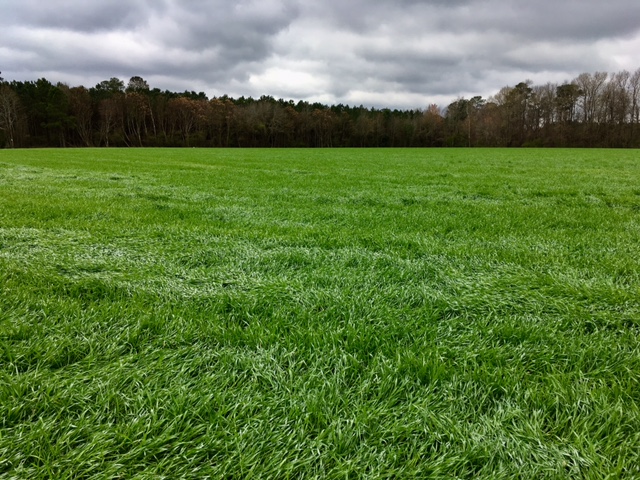
Cover crops are crops planted to reduce the impact of wind and water on bare soil. They absorb the impact of rain, reduce the speed of runoff, hold the soil in place, and encourage greater infiltration; and hence less runoff.
Sweet clover, alfalfa, rye, and winter wheat are common cover crops. They are planted on areas susceptible to erosion like steep slopes; stream and river banks, grassed waterways or around wells to protect ground water supplies from contamination. Winter wheat or rye are often planted to provide cover over the winter and 95 to 100 percent erosion control during the spring runoff.
Intercropping involves mixing plants in a field - for example planting legumes between rows of corn or soybean. This technique may be used by a farmer who cannot afford to take his or her entire crop of corn out of production.
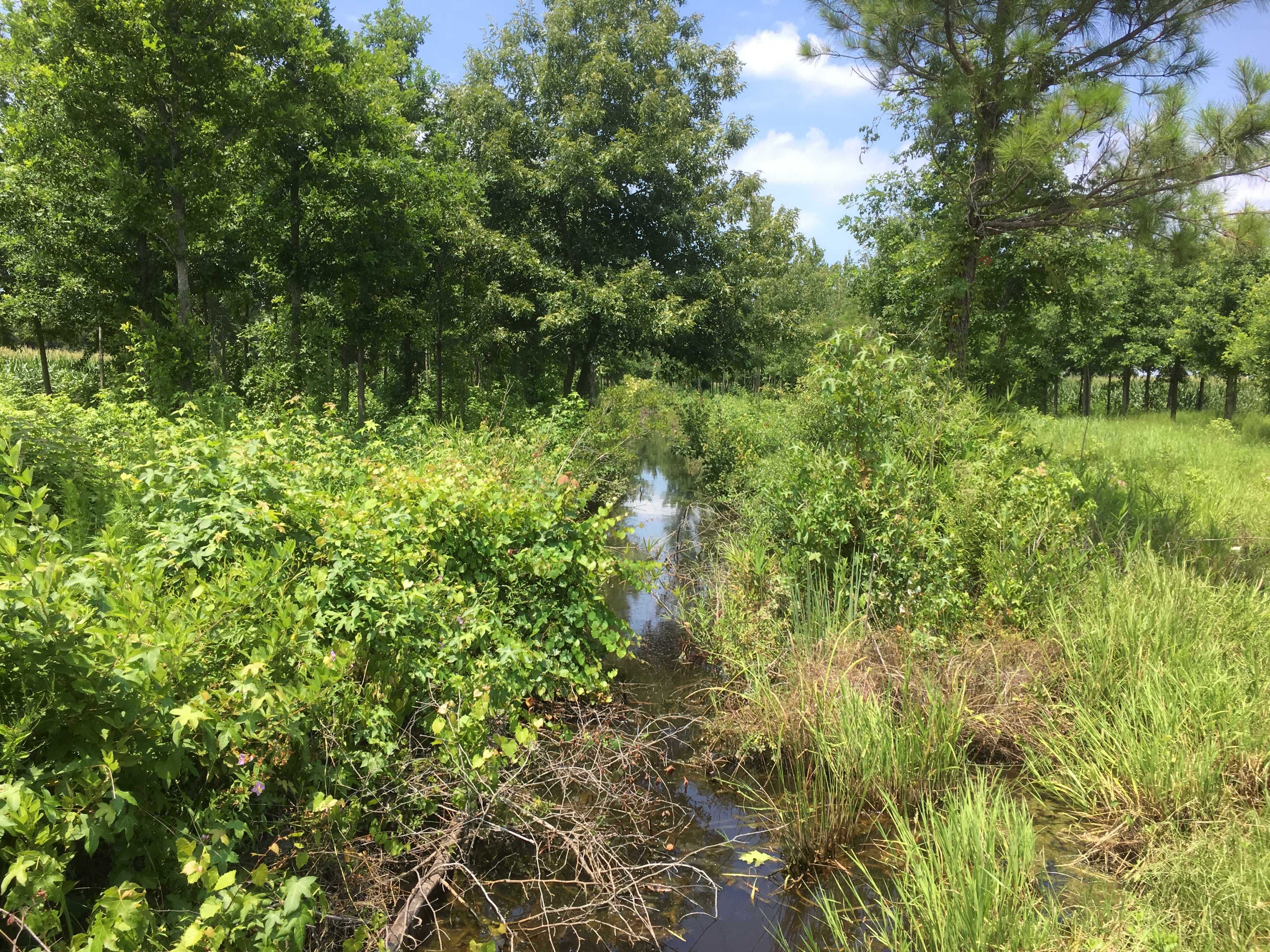
A buffer strip is an area of land adjacent to a watercourse that is vegetated with grasses or bushes. The plant cover filters sediment out of runoff, holds the soil in place and prevents washout, slumping, and reductions in water quality due to siltation. Buffer strips are generally 2 to 5 meters wide. (The width varies according to soil texture and slope). They should be protected from tillage, machinery and cattle access to work effectively.
Aside from erosion control, buffer strips provide excellent wildlife habitat for small animals and insects. If forested, they can improve stream habitat by shading the water and making the environment more suitable to fish species like trout. The leaves that fall into the water provide organic matter for small stream invertebrates which are in turn food for larger stream animals like crayfish. Stream-side forests are extremely productive habitats for wildlife, and like shelter belts, they also improve the aesthetic quality of the environment.
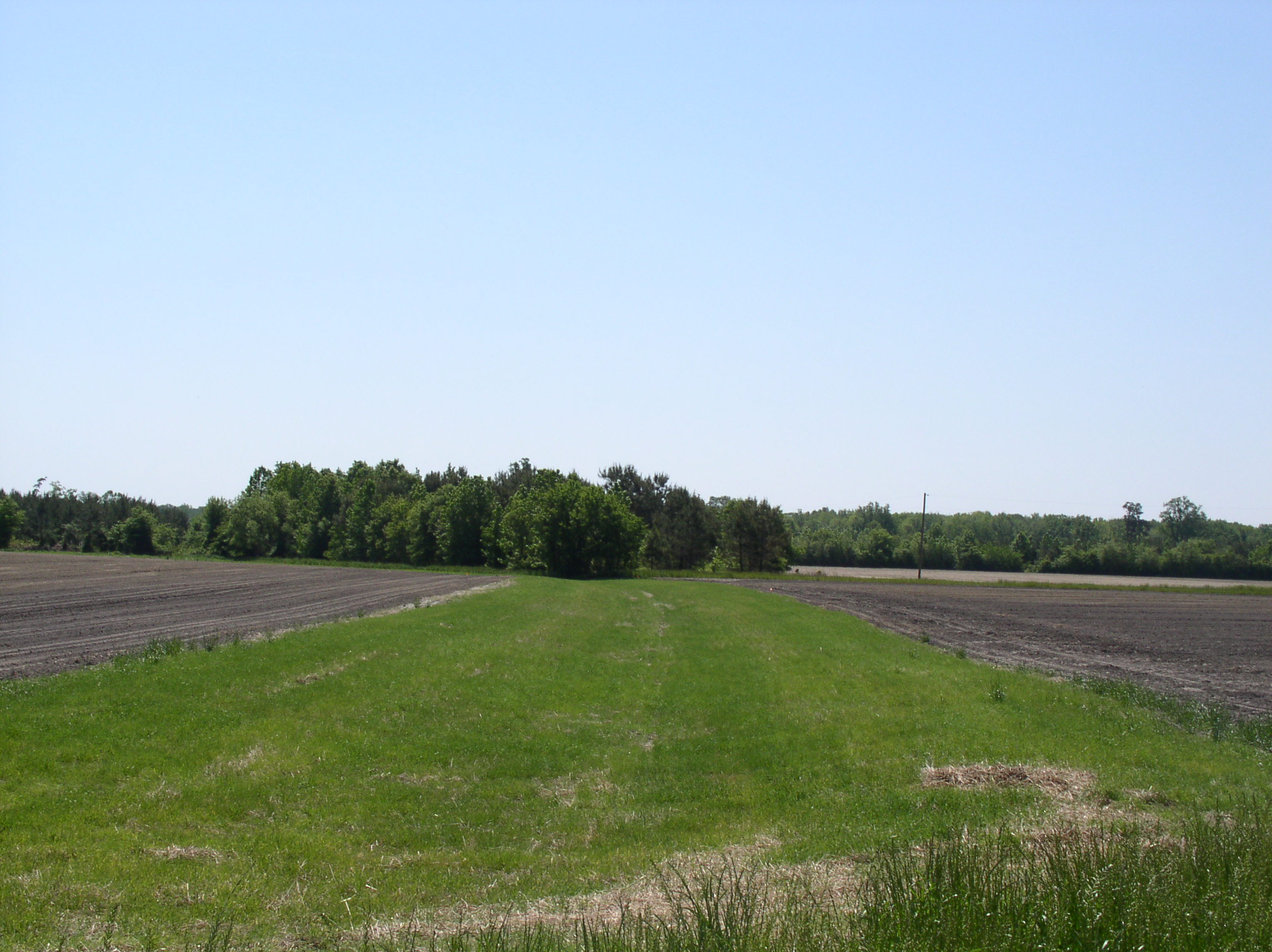
A grassed waterway is a permanently vegetated saucer-shaped channel designed to carry surface runoff across land without causing erosion. It is commonly used where gully or rill erosion is taking place due to the concentrated flow of water overland. The grass slows the flow of water and protects the soil from erosion. The water is carried safely to a stable outlet such as a drainage ditch or stream.
The advantages of using a grassed waterway are that they don't alter the natural course of the water and they can be crossed by farm, construction or forestry vehicles once well established.

A terrace is a constructed earthen ridge with a water channel along the upper side. There are several design options, but commonly both the ridge and channel are permanently grassed. Terraces are designed to intercept runoff on a slope, and reduce its erosive action on the soil down the slope. Water is channeled at a slower speed, along the vegetated channel to a safe, stable outlet such as a grassed waterway or standpipe or drop inlet.
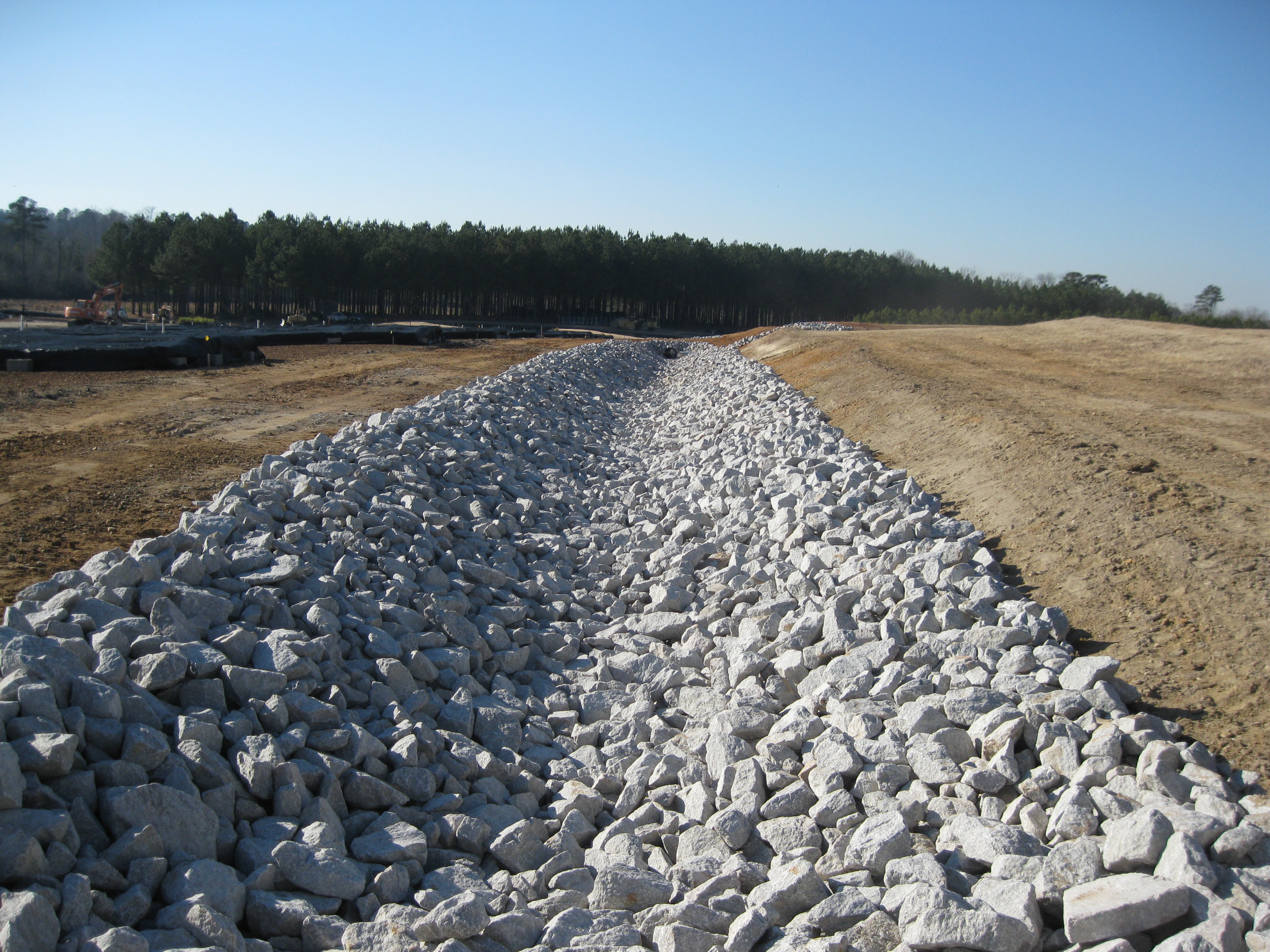
A drop inlet consists of a vertical intake pipe and a horizontal underground pipe. The water enters the vertical pipe at ground surface, and falls below where it is guided safely through a large concrete metal or plastic pipe into a stream or ditch.
A rock chute is a pile of rocks designed to move concentrated water flows over steep slopes. Drop inlets and rock chutes are often used to "step" water down where there are rapid changes in elevation, and thereby protect soil from erosion.
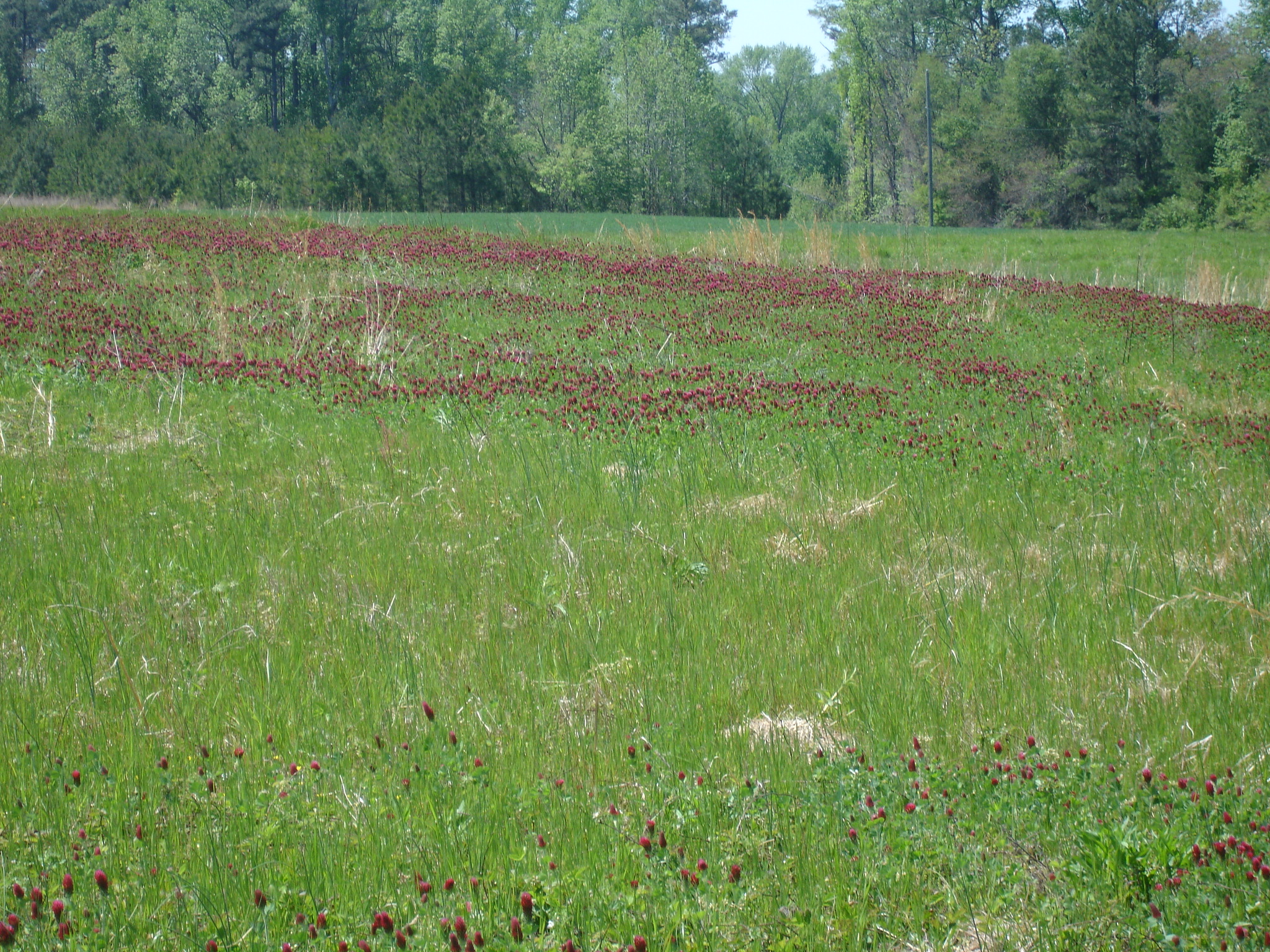
Natural fertilizers include live stock manure, mulch, municipal sludge, and legume plants such as alfalfa or clover. Manure and sludge are applied by spreading it over the land and then working it into the soil. Strict guidelines must be followed in timing applications, since both sludge and manure can cause major water contamination if handled improperly. Legumes such as clover or alfalfa are grown and then tilled into the soil as "green fertilizer".
Like chemical fertilizers, natural fertilizer replenish the soil with essential nutrients like nitrogen, phosphorus and potassium. However, they have the added benefit of providing the soil with organic matter.
Bank stabilization consists of any measure used to hold soil in place on the bank or a watercourse. Here waves, stream current, ice and surface runoff can scour away the soil.
The benefits of bank stabilization are reduced soil erosion, better water quality and an increased aesthetic environment.
Three common methods used to control stream bank erosion are rip rap, gabion baskets and re-vegetation. Ther first two methods use loose rock to break the impact of stream water on the bank, and to protect the underlying loose soil surface. Rip rap is loose rock on a steep bank. An advantage of rip rap is the rock will give to the pressure of ice and frost, whereas concrete might crack. Gabion baskets are wire baskets filled with rock. The wire prevents rock movement. They are typically used on steeper slopes and where water is flowing at higher speeds.
Stream banks can also be stabilized with shoreline planting. Natural grasses, shrubs, and trees slow the movement of water over the soil, and trap sediment, preventing it from entering the water.
Red osier dogwood and sweet gale are native shrubs that can quickly establish themselves, control erosion and beautify the water's edge. These bushes also provide excellent habitat for wildlife.
Organic or ecological growing involves minimizing or eliminating the use of synthetic fertilizers and pesticides, and nurturing rich, long term balanced soil fertility through techniques such as crop rotation, conservation tillage and adding compost and manure to the soil.
Fertilizers usually only replace macro-nutrients (phosphorus, nitrogen, and potassium) and do not provide the organic matter that natural fertilizers do. Most insecticides are non selective. In addition to killing target pests, they can kill insects and microorganisms that are essential to soil fertility.
Organic soil management can be applied on any scale from a small backyard to a large commercial farm, although the techniques for each will vary. The basic principle is taking into account the needs of organisms that live in the soil - ensuring the natural cycling of nutrients, and the return of organic matter to the soil. Organisms that are beneficial to the soil, to plants or that will help control pest organisms will all be maintained.
In organic growing the goal is never to completely eliminate pests. Even pesticides cannot do this. Rather, the objective is to establish a balanced soil ecology with an acceptable level of damage by pests.
Despite a developer's best efforts, water erosion often occurs on urban construction sites. As a result, efforts must be made to keep the sediment or silt on the site, rather than having it transported by the water to a nearby storm sewer or stream.
A silt fence can be used to contain silt on the property being developed. It does this by filtering runoff, and trapping the sediment behind a filter cloth. This structure can also reduce the amount of soil blown from a construction site, by reducing wind velocity.
A sediment trap can have several forms, but the design which is now preferred consists of a filter cloth and crushed stone barrier which is placed over an inlet to the storm sewer system. The stone prevents the movement of large particles while slowing the velocity; and the cloth prevents the finer particles from entering the storm sewer.
A sedimentation pond is especially important on a construction site if large areas of soil must remain exposed for a long period. The pond generally consists of a large depression (sized according to the drainage area) which allows the sediment laden runoff waters to be temporarily detained. This storing of runoff reduces its velocity and allows the soil particles to drop out or fall to the bottom of the pond. The clean water is then taken off the surface and guided to an appropriate outlet to a stream or ditch.
As with any soil conservation method, the above sediment controls only continue to function properly if they are correctly maintained. After sediment has been collected through these controls it must be properly removed and stabilized. This will then allow these controls to remove silt effectively.
Integrated pest management (IPM)uses a variety of techniques designed to cut the use of chemical pesticides, and hence reduce environmental risks. The backbone of IPM is crop rotation. By rotating crop from year to year, pests are starved out and less likely to establish themselves in damaging numbers the following year. Crop rotation is proven to be an effective method of pest control.
IPM also uses pest resistant crops, and biological controls such as the release of pest predators or parasites to control pest populations.
Although IPM may require more time, the trade-offs of a safer environment and reduced costs for pesticide purchase are indisputable.
Most of what has been described above relates primarily to agriculture. However, the principles apply to all land uses. Construction crews and foresters need to protect stream banks and use buffer strips as well. They can avoid major erosion problems and protect soil resources by understanding the natural flow of watercourses, the lay of the land, and the need for organic matter and a diverse environment.
Trees are rarely left standing on construction sites. Often sites are cleared entirely of vegetation, whereas, the soil could be exposed in stages to protect the soil for the longest time possible.
Page last updated: March 24, 2023